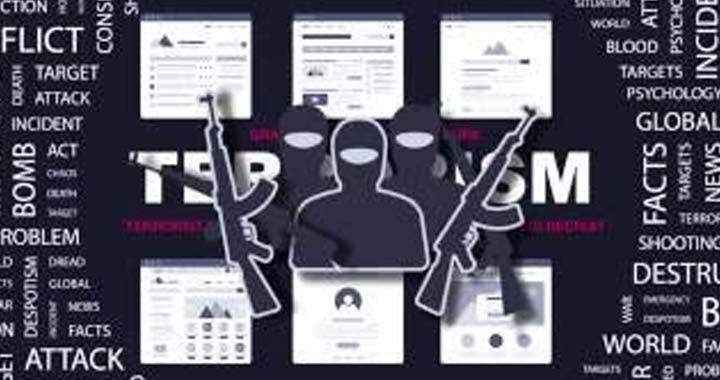The emergence of social media has redefined the dynamics of human interaction, collapsing geographical distances and creating unprecedented opportunities for global communication. These platforms, while hailed for their capacity to connect societies, have simultaneously evolved into powerful instruments of extremist exploitation. Terrorist groups, once restricted to limited channels of traditional media, now thrive in the unregulated expanse of digital spaces, using them not only to broadcast propaganda but also to recruit, mobilise, and cultivate communities that sustain violent ideologies. This dual role of social media as both a unifying force and a weapon of radicalisation illustrates the depth of the challenge in addressing terrorism in the digital age.
Historically, terrorist communication relied heavily on newspapers, radio, and television, where editorial control and censorship acted as natural barriers to unchecked dissemination. These outlets lacked interactivity, making it difficult to forge the strong bonds required for building clandestine networks. By contrast, the interactive and decentralised nature of social media has provided terrorists with unprecedented advantages. Platforms such as Facebook, X, and Telegram have become key facilitators of extremist operations: Facebook fosters recruitment networks and communities of sympathisers, X enables instantaneous dissemination of propaganda to global audiences, and Telegram, with its encrypted channels, provides the privacy necessary for covert planning, coordination, and fundraising. The anonymity embedded in these digital systems has further removed accountability, encouraging extremist narratives to spread at a speed and scale impossible in the era of traditional media.
The ability to reach vast audiences has transformed the methods of radicalisation. Terrorists exploit personal grievances, social alienation, and crises of identity, tailoring messages to resonate with those already vulnerable. Social media algorithms, designed to maximise engagement, often amplify extremist content by repeatedly exposing individuals to material aligned with their interests, creating echo chambers that normalise radical thought. In this way, recruitment shifts from physical contact to a highly personalised online process, drawing individuals deeper into extremist narratives. Groups such as ISIS have showcased extraordinary sophistication in this regard, using professionally produced videos and emotionally charged messages to attract recruits. Boko Haram has similarly capitalised on the power of visual and ideological content to enforce loyalty and extend influence. Academic debates on recruitment emphasise that while kinship ties and personal networks remain vital, social media has accelerated the radicalisation process by seamlessly connecting vulnerable individuals to these networks and embedding them in virtual extremist ecosystems. Distorted interpretations of religion often serve as the gateway for this indoctrination, where strong yet misguided identities are reshaped into commitments to violence.
Propaganda lies at the heart of these strategies, and in the digital age, it has reached unparalleled levels of sophistication. Terrorist groups now operate with the precision of media organisations, distributing content ranging from memes and livestreams to infographics and high-quality films designed to glorify violence and attract global audiences. By portraying militants as heroes and martyrdom as noble sacrifice, they create psychological and emotional appeal, offering disillusioned individuals a sense of purpose. ISIS has mastered the use of hashtags and algorithmic trends to keep its propaganda visible across platforms, while Boko Haram and Al-Qaeda employ consistent digital campaigns to maintain legitimacy and presence. Telegram, in particular, provides a safe haven where extremist communities thrive in decentralised networks, using anonymity to shield themselves while exchanging materials that reinforce ideological commitment. These efforts have normalised extremist discourse within online subcultures, ensuring propaganda is not only consumed but also shared and replicated across networks.
Beyond propaganda, social media has become indispensable for the construction of virtual terrorist communities. These networks provide emotional support, ideological reinforcement, and material assistance necessary for sustaining violent organisations. Terrorist groups utilise digital platforms for fundraising, logistical coordination, and global outreach, conducting what can only be described as public diplomacy aimed at expanding influence and recruiting sympathisers. Psychological solidarity within these groups is cemented by the anonymity of online spaces, allowing individuals to express radical beliefs without consequence and strengthening the cohesion of extremist communities. Examples from ISIS and Boko Haram highlight how these online ecosystems have become essential for survival, ensuring continuity even when physical structures are dismantled.
The global and borderless nature of social media means extremist ideologies are no longer constrained by geography. They flow seamlessly across national boundaries, targeting individuals on the margins of society by exploiting grievances and identity crises. Youth, in particular, are vulnerable to these narratives, which frame violence as noble and sacrifice as honorable. Extremists manipulate the tools of virality hashtags, interactive features, and shareable content to ensure their rhetoric permeates mainstream spaces, reaching far beyond sympathisers. This phenomenon is not restricted to one ideology; right-wing radicals, left-wing extremists, and religious militants alike have weaponized social media, turning it into a universal instrument of extremist mobilization.
Confronting this challenge has proven deeply complex. Social media companies have developed extensive mechanisms to regulate content, from deploying moderators and machine learning systems to introducing user-reporting tools and deplatforming strategies. Facebook employs vast teams of reviewers, YouTube relies on its strike system, Twitch filters harmful content in real time, and Reddit has banned entire sub-communities devoted to extremist activity. Transparency reports and user-safety initiatives, such as those introduced by Snapchat, represent additional efforts to curb abuse. Yet, even as machine learning shows promise in detecting extremist material in diverse languages, concerns about bias, accuracy, and overreach persist. Deplatforming, while useful in curbing visibility, often pushes extremists to alternative spaces such as Telegram, where surveillance and regulation are far weaker. At the international level, the European Commission has demanded the swift removal of terrorist content, but such measures raise difficult questions about balancing freedom of expression with national security. Divergent legal frameworks, cultural differences, and the global nature of the internet further complicate enforcement, leaving many loopholes for extremists to exploit.
Moving forward, an effective counter-strategy requires a multifaceted approach. Artificial intelligence must be refined to recognize extremist content without stifling legitimate expression, ensuring moderation is both effective and fair. Collaboration between governments and technology companies is essential, with initiatives such as the Global Internet Forum to Counter Terrorism demonstrating the value of collective action, though their success ultimately depends on transparency and sustained commitment. Counter-narratives must be promoted to challenge extremist messaging, particularly through credible voices such as former extremists who can dismantle radical ideologies with authenticity and firsthand experience. Public awareness campaigns, especially targeting youth, should play a central role, teaching individuals to recognize disinformation and resist recruitment tactics, aligning with broader counter-violent extremism frameworks that prioritise education and community engagement.
The exploitation of social media by terrorists underscores a profound shift in the nature of global security threats. Platforms originally designed to connect people have become battlefields where propaganda, recruitment, and ideological warfare unfold in real time. While measures such as moderation, deplatforming, and awareness initiatives represent important steps, the adaptability of extremist groups and the challenges of balancing freedom with security reveal the need for far more resilient and collaborative approaches. The struggle against digital extremism is not only about silencing violent voices but about reclaiming the very platforms that shape global discourse, ensuring that they remain instruments of progress and unity rather than tools of division and destruction.





